Restoring Biodiversity -- the Native Plant Site
Thanks to over 40 volunteers, National Park Service staff, three grants and many generous donors, in 2018 and 2019, the Friends of Dyke Marsh and partners cleared this .065-acre area and planted over 4,000 native trees and plants, a project designed restore degraded habitat and support native wildlife. We estimate that around 80 percent of the plants and trees have survived.
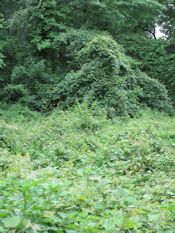 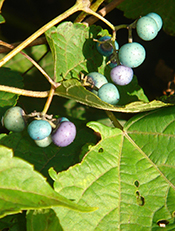 |
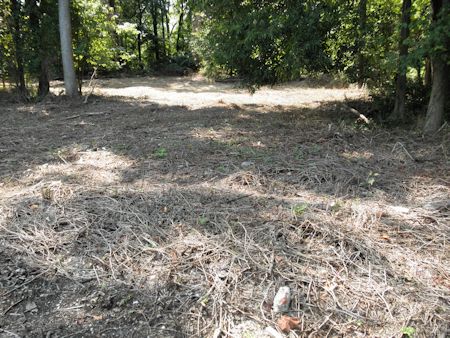 |
|
| Porcelainberry (Ampelopsis brevipedunculata) is rampant all along the Haul Road and outcompetes many valuable native plants. All photos by Glenda Booth unless otherwise noted. |
The National Park Service and FODM created a demonstration plat, clearing the area of a massive invasive plant infestation. | |
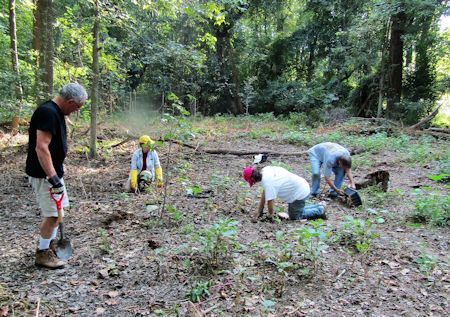 |
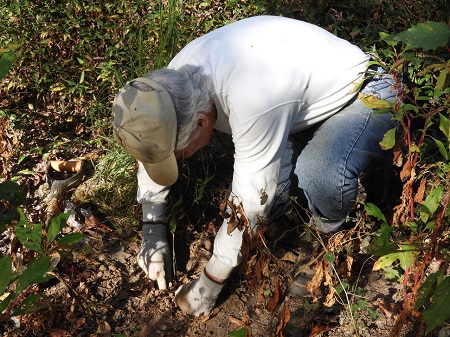 |
|
|
On October 4, 2018, volunteers planted around 300 native plants. Photo by Ned Stone |
On October 11, 2019, FODM volunteers and National Park Service staff put in 400 more native plants. Photo by Robert Veltkamp |
Here are some examples of the plants you can see much of the year: Hairy leafcup or bear’s foot (Smallanthus uvedalia); riverbank wild rye (Elymus riparius); New York ironweed (Vernonia noveboracensis); deer tongue (Dichanthelium clandestinum (syn. Panicum clandestinum); Joe Pye weed (Eutrochium purpureum); common milkweed (Asclepias syriaca) and common elderberry (Sambucus canadensis). Some native plants have naturally returned, like pokeweed (Phytolacca americana) and yellow passion flower (Passiflora lutea).
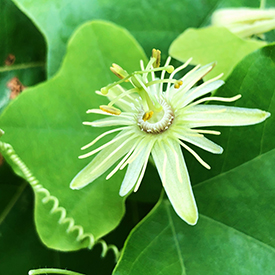 |
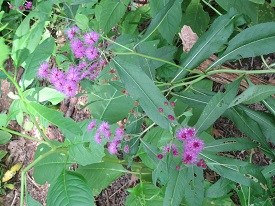 |
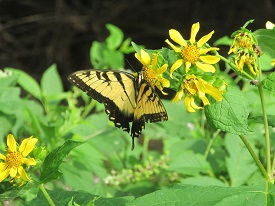 |
||
| A very welcomed surprise was the return of the yellow passion flower (Passiflora lutea) from the seed bank. Photo by Su Kim | The ironweed (Vernonia gigantea) that we planted has done well. |
An eastern tiger swallowtail butterfly (Pterourus glucus) nectars on a bear's foot/hairy leafcup (Smallanthus uvedalius) plant. |
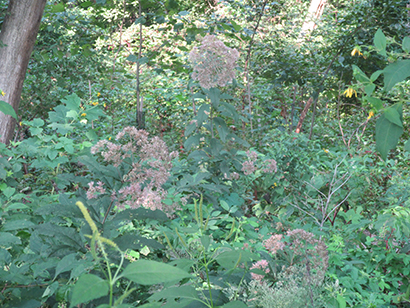 |
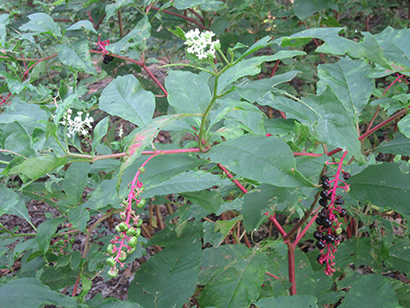 |
|
| Six-foot tall Joe-pye weed (Eupatoriadelphus fistulosus) plants thrive in the summer. | Pokeweed plants (Phytolacca americana) have berries that turn dark purple in the fall. |
Why Plant Native Plants?
“Plants and animals evolve together to create unique natural communities, weaving a complex web of interrelationships,” according to the Virginia Department of Conservation and Recreation.
Native plants which produce nectar, pollen and seeds, serve as food for native birds, butterflies, bees and other wildlife. Many insects, like butterflies, depend on specific plants, called “host plants,” with which they co-evolved for their food and shelter.
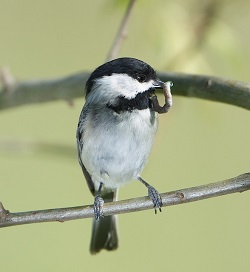 |
|
| Carolina Chickadee (Parus carolinensis) with a caterpillar. |
|
Here is one example of the importance of native plants to wildlife. At FODM’s September 2018 meeting, Dr. Desiree Narango, a University of Massachusetts ecologist, explained that native plants support a higher abundance and biomass of caterpillars than non-native plants. She said that a chickadee pair with four to seven young, needs between 390 to 570 caterpillars every day to feed their young. Caterpillars are very dependent on certain host plants.
Native plants can improve ecological functionality of landscapes and provide ecological services like habitat creation, stormwater retention, cleaner air and erosion and sediment control. Native plants can improve soil health. Healthy habitats have plants and animals (producers and consumers) in balance. A diversity of plants can help keep pest populations in check.
By installing and supporting native plants, this project is one small way we can restore and sustain biodiversity, strengthen the resource base for wildlife and for people and create a healthier environment.
Partners, Grants
Our partners in this project are the National Park Service, Earth Sangha and the Audubon Society of Northern Virginia. FODM received grants from the Audubon Society of Northern Virginia, the National Environmental Education Foundation and Transurban, operator of the I-95 and I-495 express lanes, and donations from many generous members.
Controlling Invasive Plants
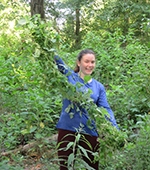 |
|
| Mara Surovell helped control invasive mile-a-minute (Persicaria perfoliata). | |
For many years, volunteers have diligently worked in the preserve to eliminate and control invasive species, such as stiltgrass (Microstegium vimineum), mile-a-minute (Persicaria perfoliata), porcelainberry (Ampelopsis brevipedunculata), English ivy (Hedera helix) and others.
Invasive plants are introduced intentionally or accidentally by people in a region in which they did not evolve. Invasives typically grow and spread rapidly and are prolific seed producers. They typically outcompete and displace native plants and have few controls to keep them in check. University of Delaware entomologist Douglas Tallamy offers this in his book, Bringing Nature Home: “When a plant is transported to an area of the world that contains plants, animals and diseases with which it has never before interacted, the coevolutionary constraints that kept it in check at home are gone, as are the ecological links that made that plant a contributing member of its ecosystem.”
We welcome volunteers and can train you to identify around five target invasive plants and the control methods. To help, check the left column of our homepage, www.fodm.org, under “Coming Events, for a link to register to help on specific dates and for more information on forthcoming events. You can also send an email to This email address is being protected from spambots. You need JavaScript enabled to view it. with any questions.
To learn about common invasive plants in the Washington, see “Plant Invaders of Mid-Atlantic Natural Areas” at https://www.invasive.org/alien/pubs/midatlantic/midatlantic.pdf.
For more information on native plants, visit Plant NOVA Natives at www.plantnovanative.org and the Virginia Native Plant Society at www.vnps.org.
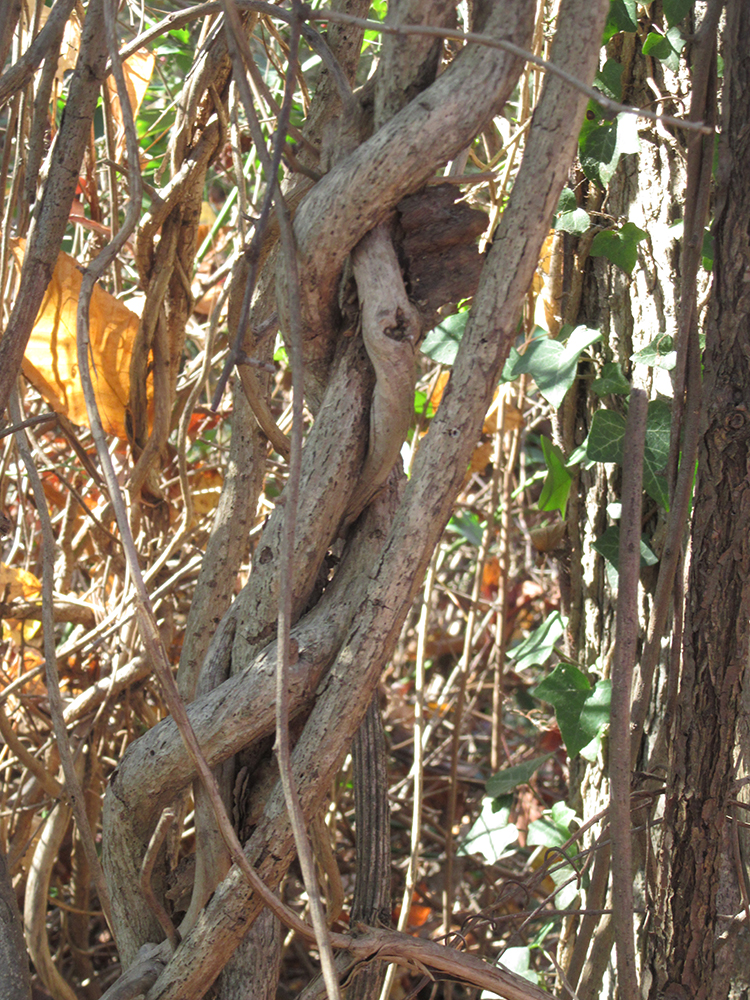 |
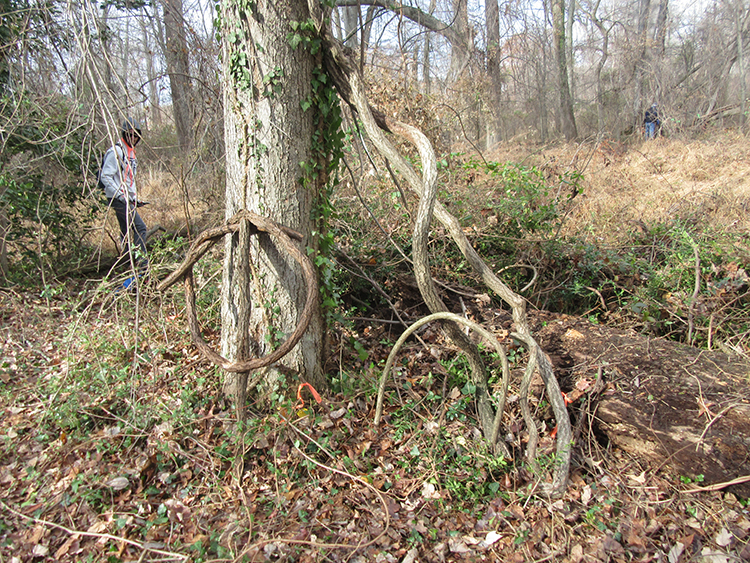 |
|
| Oriental bittersweet (Celastrus orbiculatus) is an invasive vine that can climb and girdle trees up to the canopy level and form thick masses over shrubs and plants producing dense shade that kills them. | Austen Ballard made “invasive vine sculpture” with porcelain berry (left) and Oriental bittersweet (right). These vines were about three inches thick. Porcelain berry is a vigorous invader that blankets plants and kills them by blocking sunlight. | |
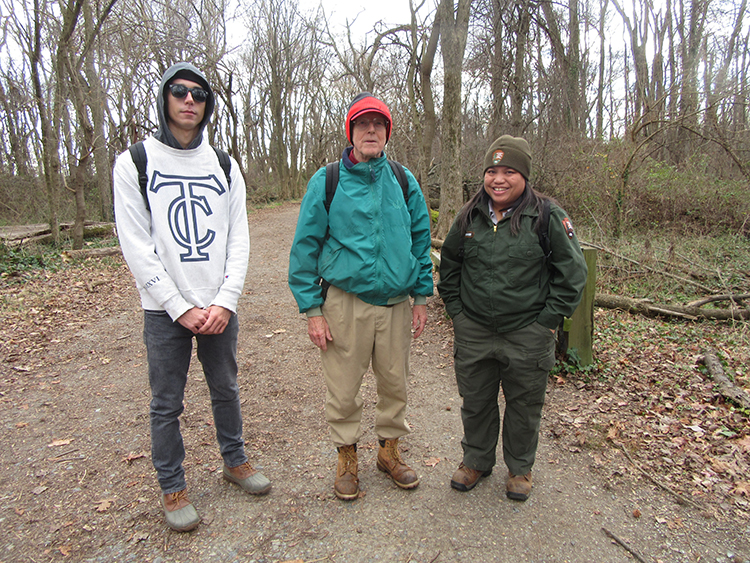 |
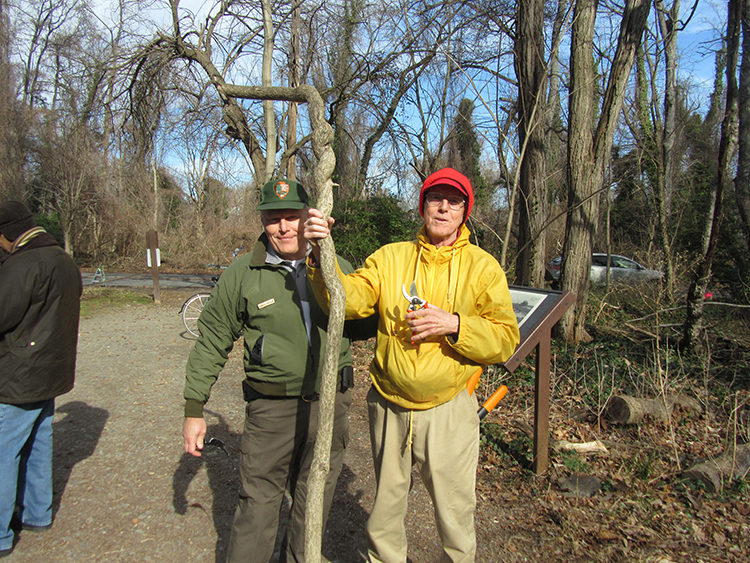 |
|
| Austen Ballard, Jim Gearing (the FODM leader) and Mireya Stirzaker, invasive plant specialist, with the GWM Parkway, National Park Service, are stalwarts. | FODM invasives coordinator Jim Gearing conquered an impressive, invasive Oriental bittersweet vine, pictured here with GW Memorial Parkway Superintendent Charles Cuvelier. | |
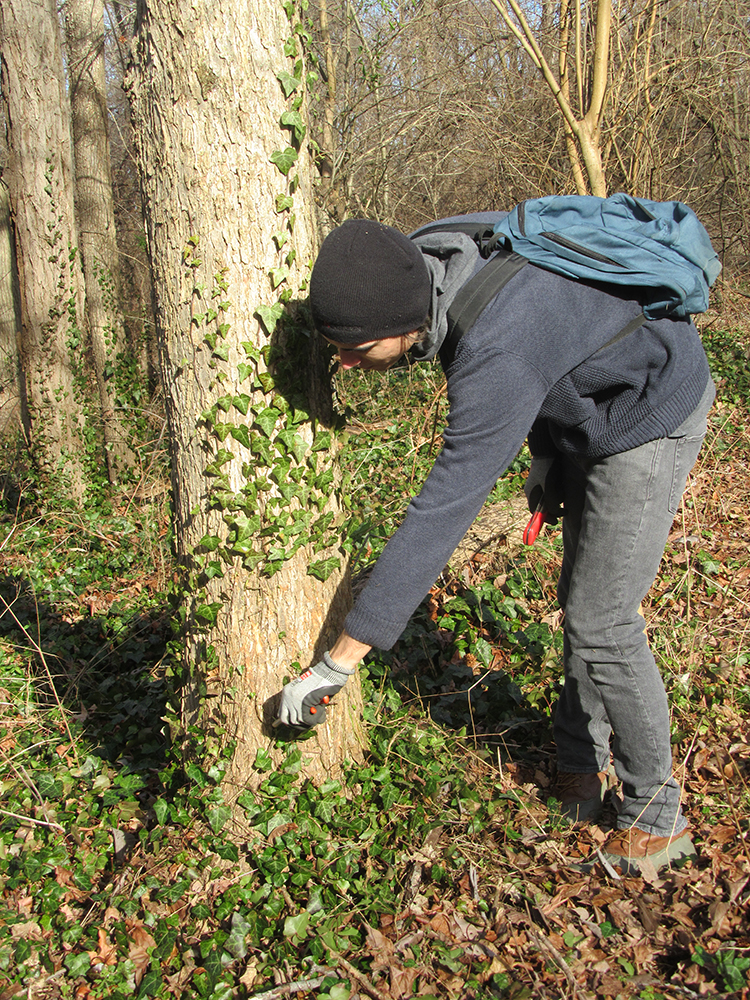 |
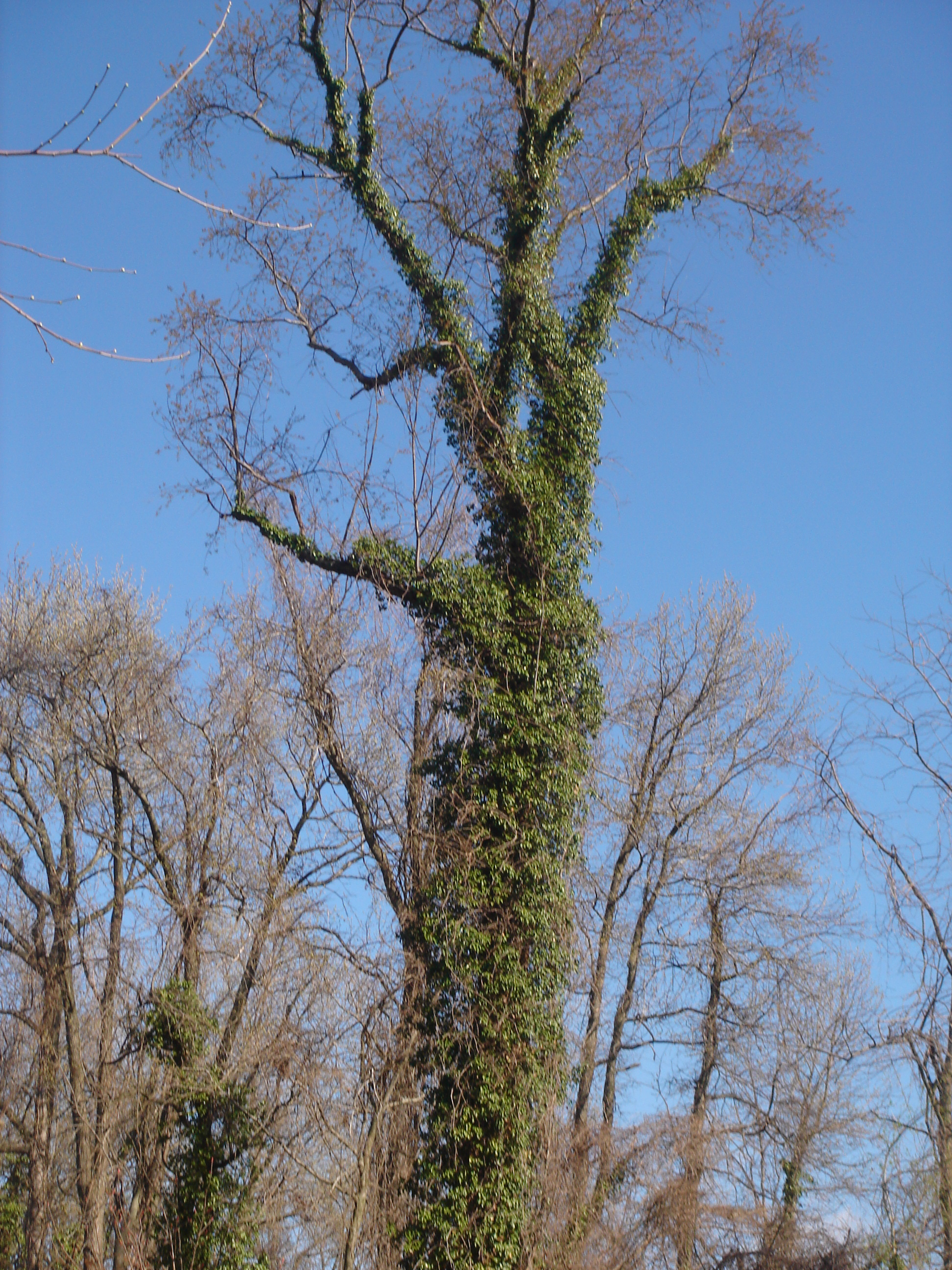 |
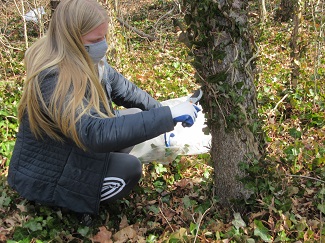 |
||
| Austen Ballard and many others removed English ivy (Hedera helix) from trees. | English ivy (Hedera helix) can eventually kill trees. | Anna Medema, a National Park Service intern, helped save a tree. |

 Friends of Dyke Marsh, Inc. is a non-profit 501(c)(3) organization.
Friends of Dyke Marsh, Inc. is a non-profit 501(c)(3) organization.